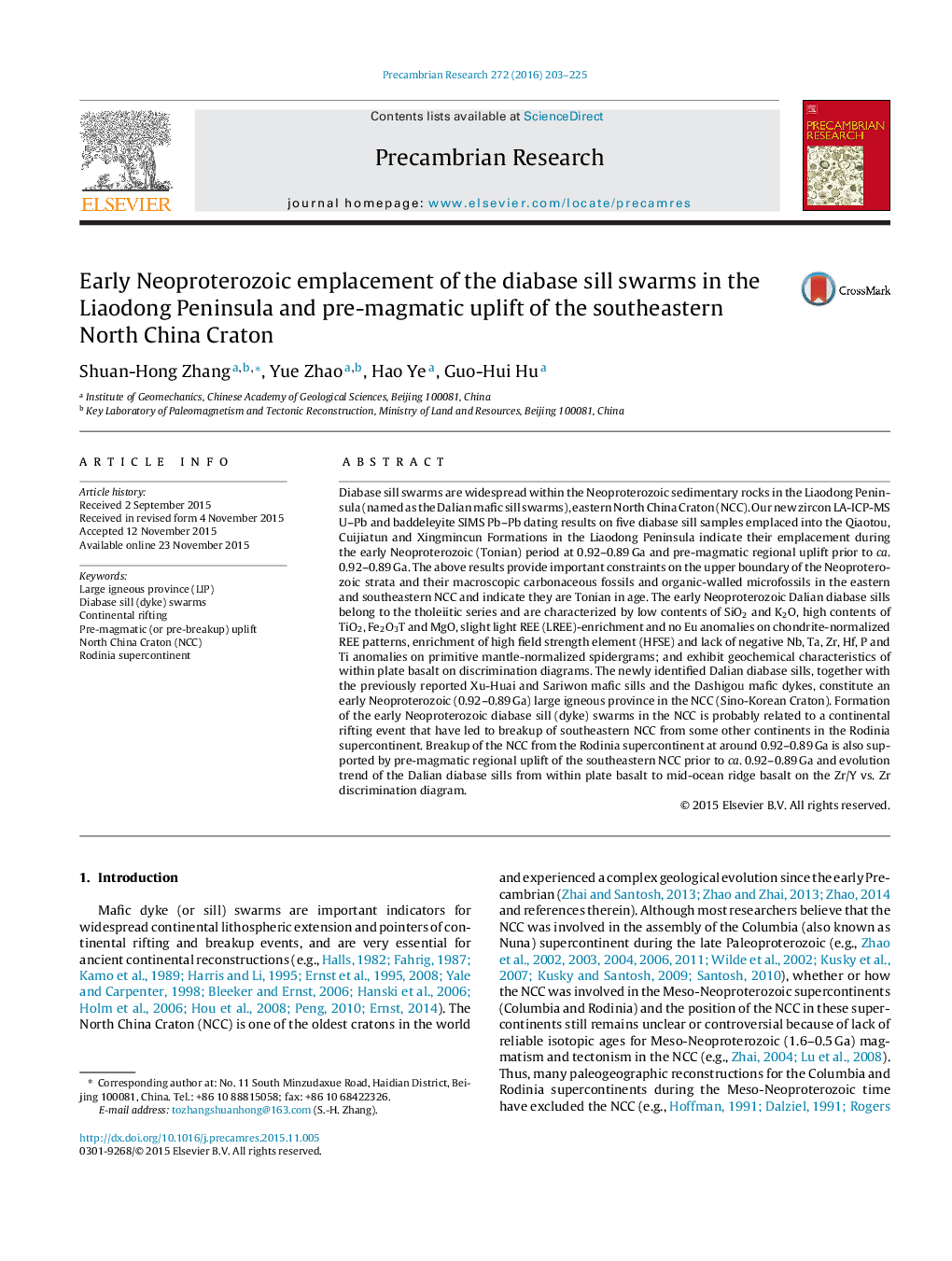| Article ID | Journal | Published Year | Pages | File Type |
|---|---|---|---|---|
| 4722444 | Precambrian Research | 2016 | 23 Pages |
•Emplacement of the diabase sills in the Liaodong Peninsula at 0.92–0.89 Ga.•End of the Neoproterozoic strata in the SE NCC prior to 0.92–0.89 Ga.•The macroscopic fossils and microfossils in the SE NCC are Tonian in age.•The SE NCC has undergone pre-magmatic uplift prior to 0.92–0.89 Ga.•Diabase sills and uplift as evidence for breakup of the NCC from the Rodinia.
Diabase sill swarms are widespread within the Neoproterozoic sedimentary rocks in the Liaodong Peninsula (named as the Dalian mafic sill swarms), eastern North China Craton (NCC). Our new zircon LA-ICP-MS U–Pb and baddeleyite SIMS Pb–Pb dating results on five diabase sill samples emplaced into the Qiaotou, Cuijiatun and Xingmincun Formations in the Liaodong Peninsula indicate their emplacement during the early Neoproterozoic (Tonian) period at 0.92–0.89 Ga and pre-magmatic regional uplift prior to ca. 0.92–0.89 Ga. The above results provide important constraints on the upper boundary of the Neoproterozoic strata and their macroscopic carbonaceous fossils and organic-walled microfossils in the eastern and southeastern NCC and indicate they are Tonian in age. The early Neoproterozoic Dalian diabase sills belong to the tholeiitic series and are characterized by low contents of SiO2 and K2O, high contents of TiO2, Fe2O3T and MgO, slight light REE (LREE)-enrichment and no Eu anomalies on chondrite-normalized REE patterns, enrichment of high field strength element (HFSE) and lack of negative Nb, Ta, Zr, Hf, P and Ti anomalies on primitive mantle-normalized spidergrams; and exhibit geochemical characteristics of within plate basalt on discrimination diagrams. The newly identified Dalian diabase sills, together with the previously reported Xu-Huai and Sariwon mafic sills and the Dashigou mafic dykes, constitute an early Neoproterozoic (0.92–0.89 Ga) large igneous province in the NCC (Sino-Korean Craton). Formation of the early Neoproterozoic diabase sill (dyke) swarms in the NCC is probably related to a continental rifting event that have led to breakup of southeastern NCC from some other continents in the Rodinia supercontinent. Breakup of the NCC from the Rodinia supercontinent at around 0.92–0.89 Ga is also supported by pre-magmatic regional uplift of the southeastern NCC prior to ca. 0.92–0.89 Ga and evolution trend of the Dalian diabase sills from within plate basalt to mid-ocean ridge basalt on the Zr/Y vs. Zr discrimination diagram.
Graphical abstractFigure optionsDownload full-size imageDownload as PowerPoint slide
